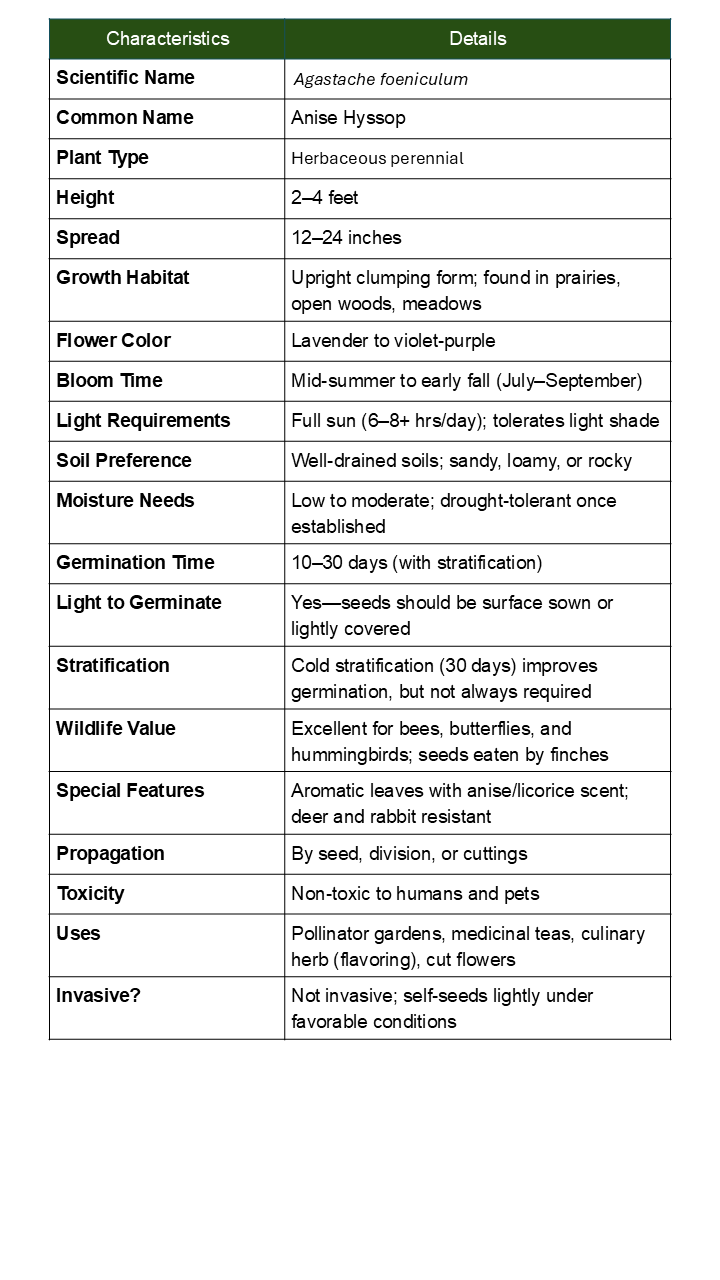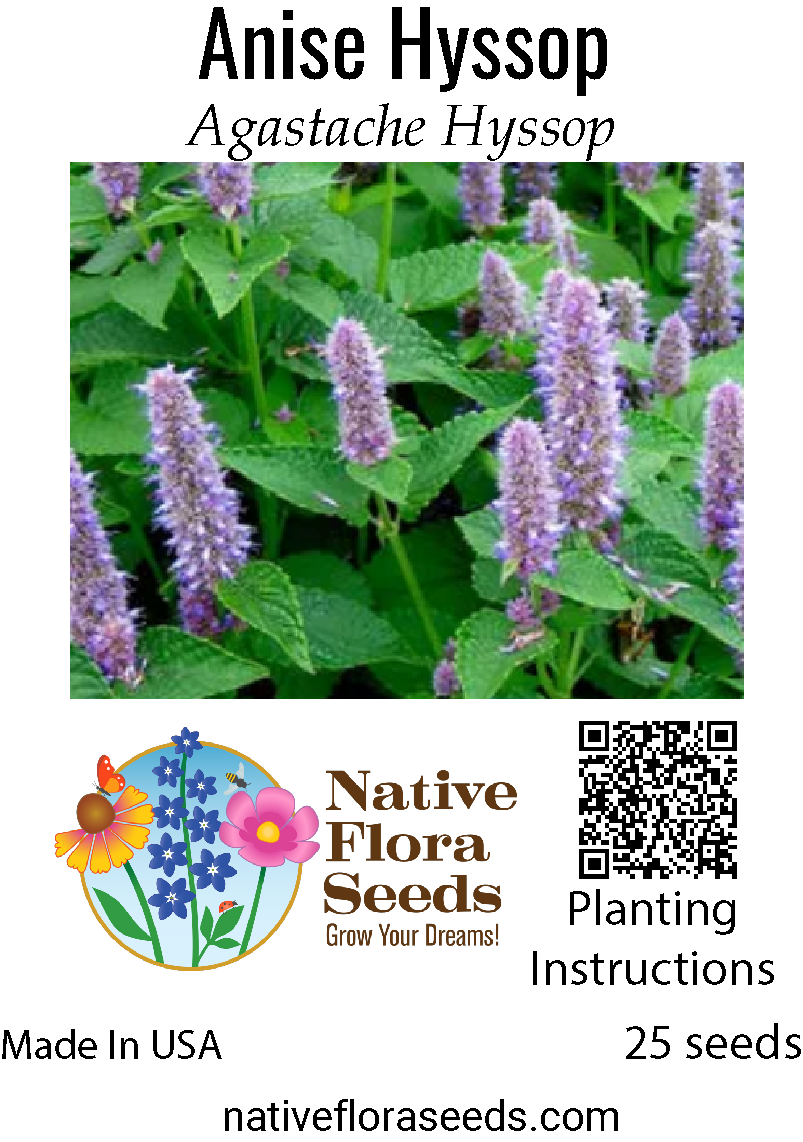Anise Hyssop Seeds - Native Perennial Herb (Agastache foeniculum)
Anise Hyssop - A Fragrant Native Perennial
Agastache foeniculum, commonly known as anise hyssop or blue giant hyssop, is a hardy perennial herb in the mint family, prized for its fragrant foliage and spectacular flower spikes. This native North American treasure releases a sweet, licorice-like scent when its leaves are crushed, making it a favorite for teas, culinary uses, and aromatic gardens.
Key Features:
- Native Heritage: Indigenous North American perennial herb
- Aromatic Foliage: Sweet, licorice-scented leaves perfect for teas and cooking
- Stunning Blooms: Dense spikes of violet to lavender-blue flowers from midsummer to fall
- Pollinator Magnet: Highly attractive to bees, butterflies, and hummingbirds
- Drought Tolerant: Resilient and low-maintenance once established
- Culinary Uses: Leaves and flowers are edible with a sweet anise flavor
Growing Information:
Anise hyssop thrives in full sun and well-drained soil, reaching heights of 2 to 4 feet. This versatile plant blooms from midsummer to early fall, providing continuous color and fragrance. Beyond its ornamental value, it plays a crucial role in supporting biodiversity and is excellent for native plant gardens, herb gardens, and pollinator habitats.
Perfect for: Native herb gardens, pollinator gardens, tea gardens, culinary gardens, and naturalized landscapes.


